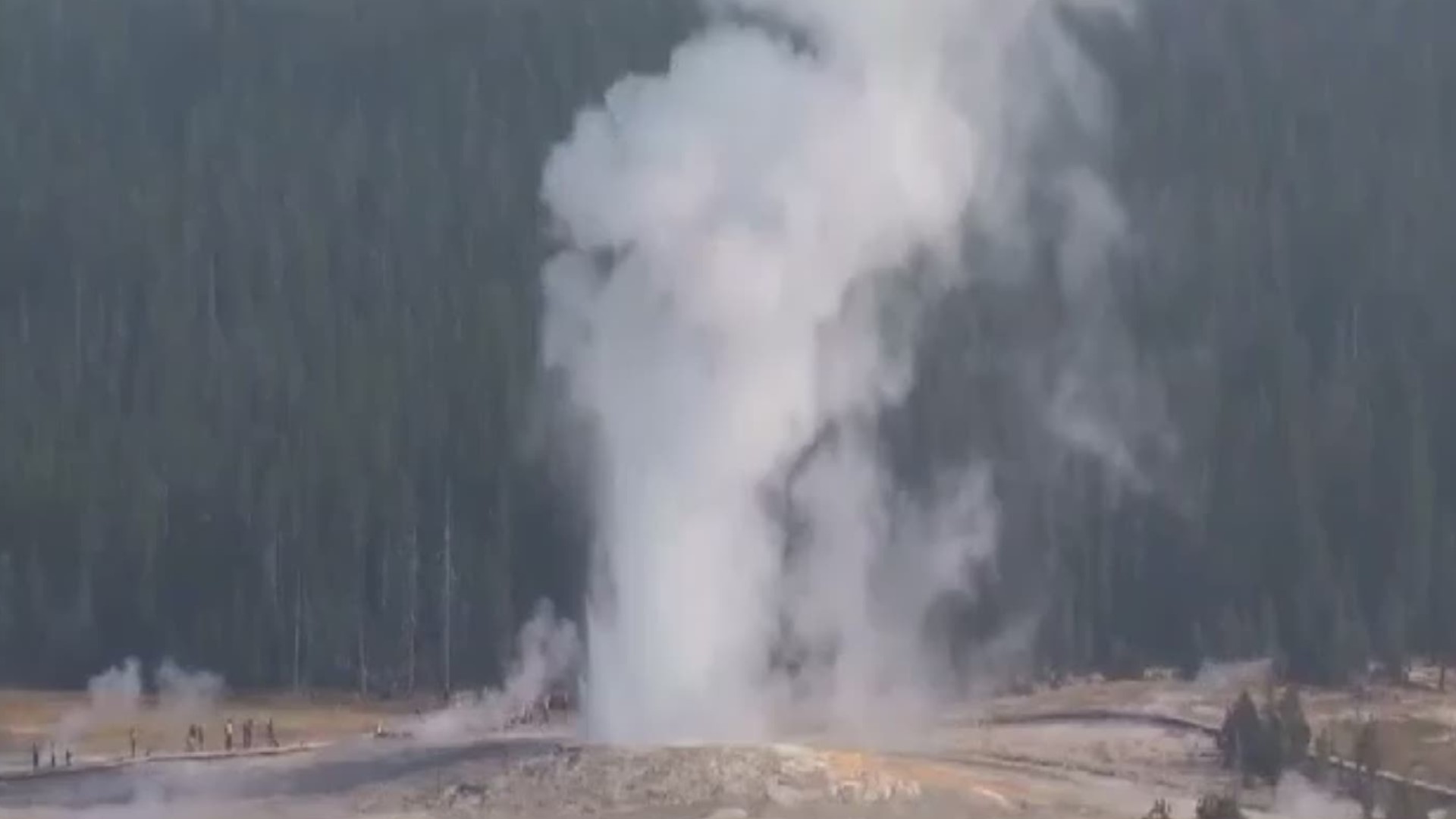YELLOWSTONE NATIONAL PARK, Wyo. — Last week, the Giantess Geyser at Yellowstone National Park roared back to life after more than six years without erupting.
According to the National Parks Service, infrequent but violent eruptions characterize Giantess Geyser. This fountain-type geyser erupts in several bursts that can soar 200 feet into the air.
Prior to last week's incident, the geyser last erupted on January 29, 2014.
Some took to social media wondering if they should worry about a volcanic eruption due to the recent activity at the park.
"Nope," the United States Geological Survey (USGS) said in a tweet. "This is what geysers do. 2020 or not, Yellowstone remains calm in terms of volcanic activity. As for being cool to watch...definitely!"
However, a "supervolcano" does lie beneath the surface of Yellowstone.
The term “supervolcano” implies an eruption of magnitude 8 on the Volcano Explosivity Index (VEI), indicating an eruption of more than 1,000 cubic kilometers (250 cubic miles) of magma.
Yellowstone has had at least three such eruptions:
- 2.1 million years ago
- 1.2 million years ago
- 640,000 years ago
The three eruptions were about 6,000, 700 and 2,500 times larger than the May 18, 1980, eruption of Mt. St. Helens in Washington. Together, the eruptions would have expelled enough ash and lava to fill the Grand Canyon, according to Yellowstone. Researchers also estimate volcanic ash covered a significant portion of North America’s western half during these eruptions. Those living within 200 miles of Yellowstone would have been in ash up to mid-calf.
During the last eruption, the Yellowstone eruption area collapsed upon itself, creating a sunken giant crater or caldera 1,500 square miles in area. The magmatic heat powering that eruption (and the two others, dating back 2.1 million years) still powers the park’s famous geysers, hot springs, fumaroles, and mud pots.
The USGS says if another large, caldera-forming eruption were to occur at Yellowstone, its effects would be worldwide.
"Such a giant eruption would have regional effects such as falling ash and short-term (years to decades) changes to global climate," the USGS website says.. "Those parts of the surrounding states of Montana, Idaho, and Wyoming that are closest to Yellowstone would be affected by pyroclastic flows, while other places in the United States would be impacted by falling ash (the amount of ash would decrease with distance from the eruption site). Such eruptions usually form calderas, broad volcanic depressions created as the ground surface collapses as a result of withdrawal of partially molten rock (magma) below."
Fortunately, the chances of this sort of eruption at Yellowstone are exceedingly small in the next few thousands of years
The most likely explosive event to occur at Yellowstone is actually a hydrothermal explosion — a rock-hurling geyser eruption — or a lava flow, according to the USGS.
"Hydrothermal explosions are very small; they occur in Yellowstone National Park every few years and form a crater a few meters across," says the USGS. "Every few thousand years, a hydrothermal explosion will form a crater as much as a few hundred meters across."
Though the worst-case scenario for a giant Yellowstone eruption is indeed bad and could have global implications, most past eruptions at Yellowstone were not highly explosive. According to the USGS, of the past 50 or so eruptions, almost all were simple lava flows. If they occurred tomorrow or next year, they would have minimal direct effect outside Yellowstone National Park.
Yellowstone is routinely monitored for signs of volcanic activity. These methods include using seismographs to detect earthquakes and using GPS (Global Positioning System) to detect ground motion. The USGS says they have not detected any signs of activity that suggest an eruption is imminent.

